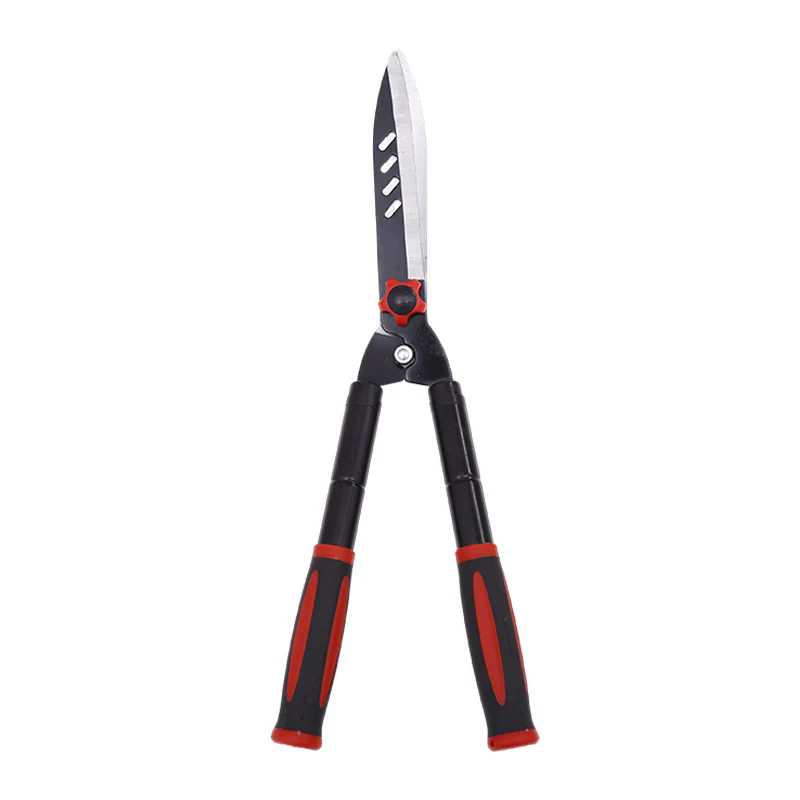The Ultimate Guide to Hedge Shears: Your Essential Tool for a Perfect Garden
2025-03-14
When it comes to maintaining a neat and tidy garden, hedge shears are an essential tool that no gardener should be without. Whether you’re trimming bushes, shaping hedges, or cutting back overgrown shrubs, hedge shears make the job easier and more efficient. In this blog, we’ll explore what hedge shears are, their types, how to use them properly, and how to choose the right one for your garden.
What Are Hedge Shears?
Hedge shears are garden tools designed to trim and shape bushes, hedges, and other woody plants. They typically feature long, straight blades and handles that allow you to cut through branches and stems with ease. The blades can either be manual or powered, depending on the type of hedge shear you choose. While hedge shears may look like a simple tool, they’re built with precision and efficiency in mind, making them perfect for tasks that require accuracy, like shaping hedges or cutting decorative topiaries.
Types of Hedge Shears
1. Manual Hedge Shears
Manual hedge shears are the traditional type of hedge trimmer. They feature two long, sharp blades that are operated by hand, with handles that allow you to apply force to cut through branches and stems. These shears are typically best suited for small to medium-sized hedges or bushes. They provide greater control and are quiet, making them ideal for gardeners who prefer a more hands-on approach.
- Bypass Blades: These shears work like scissors, where the blades pass by each other to create a clean cut. Bypass hedge shears are perfect for trimming live plants and creating neat, precise cuts.
- Anvil Blades: The anvil style has one sharp blade that comes down onto a flat surface, similar to a knife cutting against a board. These shears are better for cutting through thicker, woody branches and dead growth.
2. Electric Hedge Shears
For larger gardens or more frequent trimming, electric hedge shears offer a faster and less physically demanding solution. These shears are powered by electricity and can either be corded or battery-operated. Electric shears are perfect for tackling larger hedges, especially if you have a lot of trimming to do.
- Corded Electric Shears: These require an electrical outlet, offering consistent power for long periods without worrying about battery life.
- Cordless Electric Shears: Battery-powered shears are portable and provide flexibility, making them ideal for trimming areas without easy access to electrical outlets.
3. Gas-Powered Hedge Shears
If you’re looking for a powerful tool that can handle large and dense hedges, gas-powered hedge shears are the way to go. They offer the most power for heavy-duty jobs and are perfect for professionals or homeowners with extensive gardens. While they tend to be heavier and louder, they provide a lot of cutting power.
4. Pole Hedge Shears
When your hedges are tall and hard to reach, pole hedge shears come in handy. These shears are designed with an extended handle or a telescoping feature, allowing you to trim high hedges without the need for a ladder. They’re available in both manual and powered versions, and some even feature pivoting heads to give you more control over the angle of the cut.
How to Use Hedge Shears Properly
Using hedge shears properly is important to ensure that your hedges stay healthy and look great. Here are some tips to get the best results:
1. Choose the Right Time: The best time to trim hedges is typically in the early spring or late summer, depending on the type of hedge you have. Avoid trimming during periods of extreme heat or frost.
2. Make Clean Cuts: Whether you’re using manual, electric, or gas-powered shears, always aim for clean, straight cuts. Rough cuts can damage the plant and create entry points for diseases.
3. Shape Gradually: When shaping hedges, take your time and work gradually. Start by trimming the outer edges and work inward to create a symmetrical shape. For a natural look, avoid cutting too much from the inside of the hedge.
4. Don’t Overcut: Avoid cutting back too much at once. Only trim about a third of the plant’s growth to avoid stressing the plant. If you need to shape it further, trim again in a few weeks.
5. Safety First: Always wear gloves and safety goggles when using hedge shears to protect yourself from sharp blades and flying debris. If using powered shears, be mindful of the power cord or battery and ensure that the area around the hedge is clear of obstacles.
How to Choose the Right Hedge Shears
When selecting the right hedge shears for your garden, consider the following factors:
1. Garden Size: For small to medium-sized gardens, manual or electric hedge shears should suffice. However, if you have large hedges or extensive areas to trim, gas-powered or pole hedge shears may be more appropriate.
2. Blade Length: Longer blades allow you to trim more surface area at once, making them ideal for large hedges. Shorter blades provide more control and are better suited for smaller tasks or intricate work.
3. Weight and Comfort: Choose a tool that feels comfortable in your hands. Heavier tools may be harder to maneuver, especially for extended periods. Look for shears with ergonomic handles to reduce strain on your wrists and hands.
4. Durability and Maintenance: Quality hedge shears are made of durable materials like carbon steel or stainless steel, which help prevent rust and ensure long-lasting performance. Regular maintenance, such as sharpening the blades, will also extend the life of your shears.
Conclusion
Hedge shears are an indispensable tool for maintaining your garden, whether you’re tackling small, precise tasks or large, overgrown hedges. With the right type of hedge shear in your toolbox, you can ensure that your plants are trimmed and shaped beautifully, adding a professional touch to your garden. From manual shears for light trimming to powerful gas-powered models for heavy-duty work, there’s a hedge shear to suit every gardener’s needs. Choose wisely, follow the proper techniques, and enjoy a beautifully manicured garden year-round!



